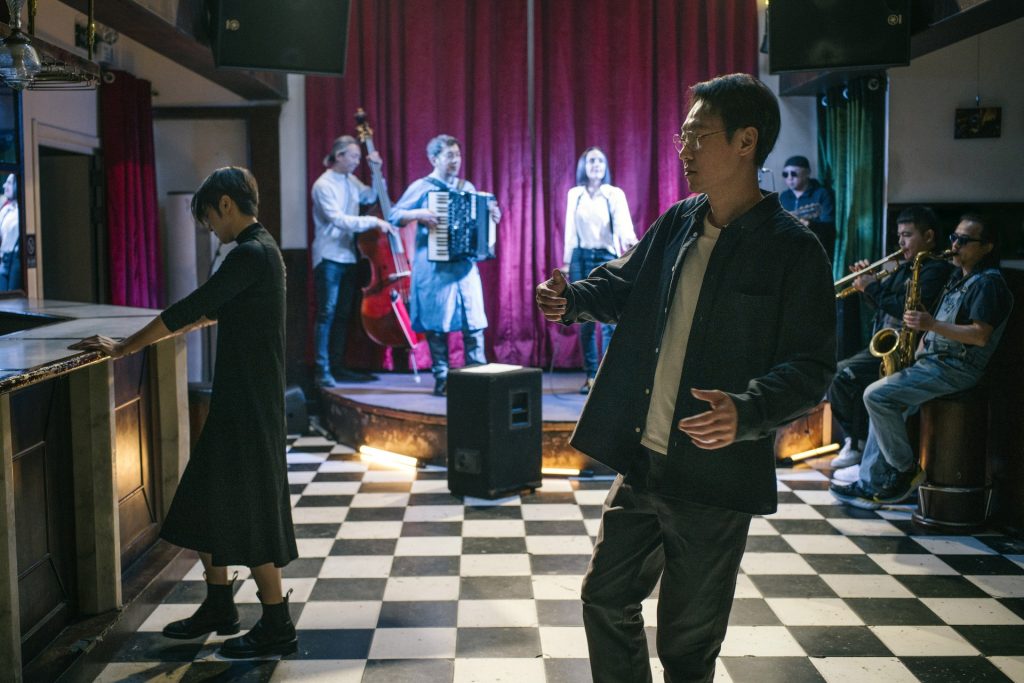DP Songri Piao Talks About Shooting The Shadowless Tower with Angénieux Optimo Primes
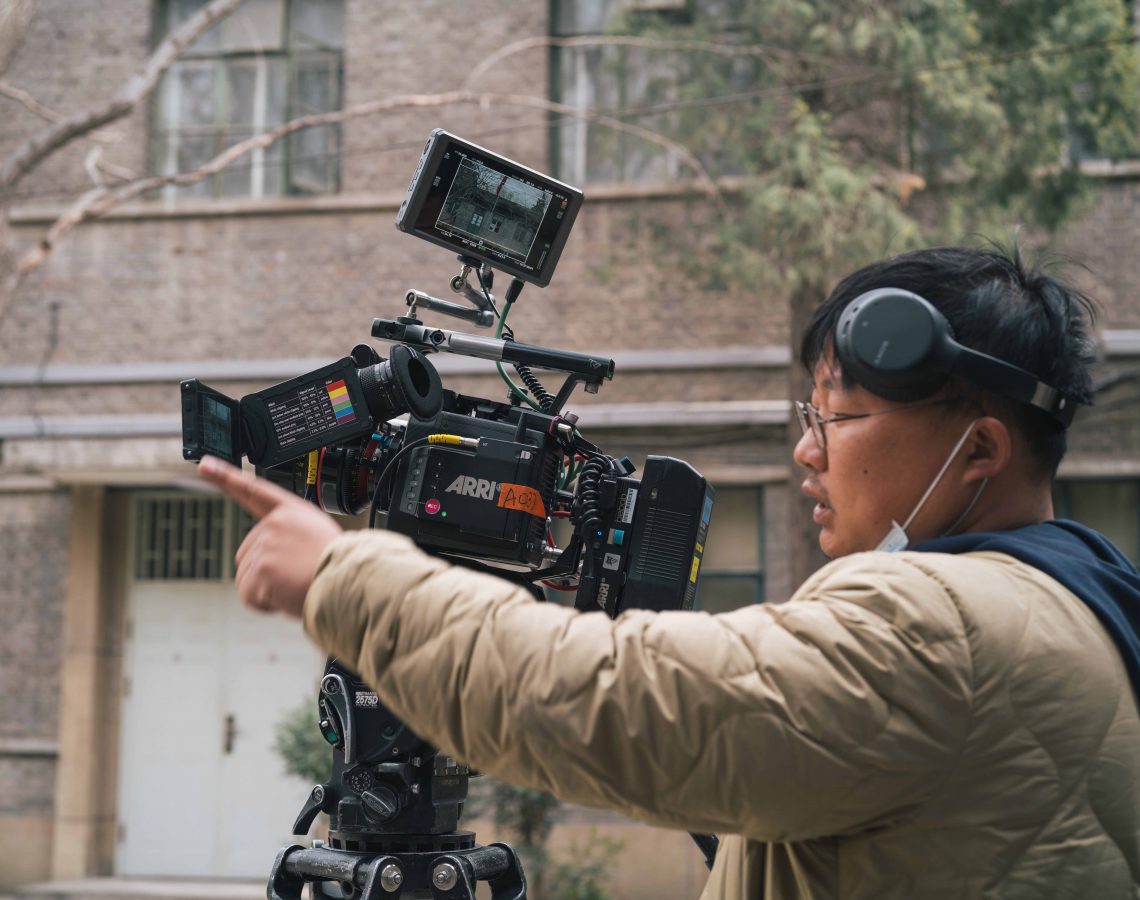
The Shadowless Tower by Director Lu Zhang attracted industry attention earlier this year when it was shortlisted among the Competition lineup for the 73rd Berlin International Film Festival. And at the 13th Beijing International Film Festival, the film emerged as the top winner by taking home five major awards, including Best Screenplay, Best Actor, Best Supporting Actor, Best Cinematography, and Best Artistic Contribution.
This film marks the first collaboration between the Director of Photography Songri Piao and Director Lu Zhang. In selecting the lenses for the film, Piao chose the Angénieux Optimo Primes to capture the story against an iconic Beijing backdrop. This is a recent interview between Jebsen JCineCast team and Songri Piao, who also provided the photos for this feature.
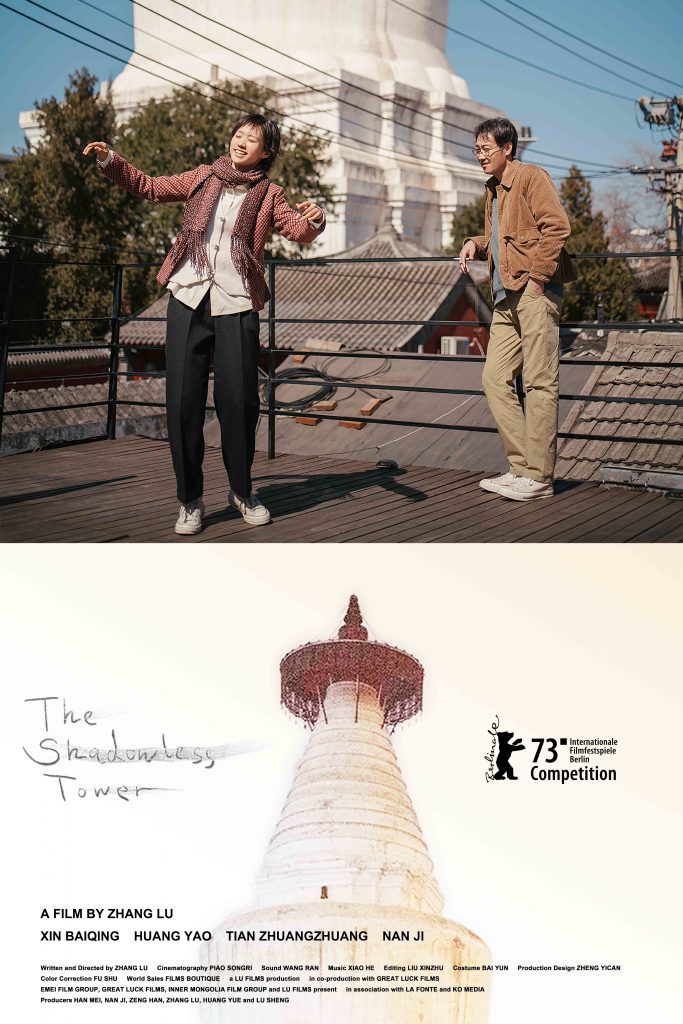
Please share how you defined the visual style of The Shadowless Tower.
Songri Piao: Director Lu Zhang is a true veteran and has many particular habits when it comes to visuals. Prior to filming, he already had a good idea about the look and feel of The Shadowless Tower. I think visuals are one of the things that you can predetermine in a film, whereas performance, changes in character emotions and other aspects can only be envisioned, but not necessarily predetermined.
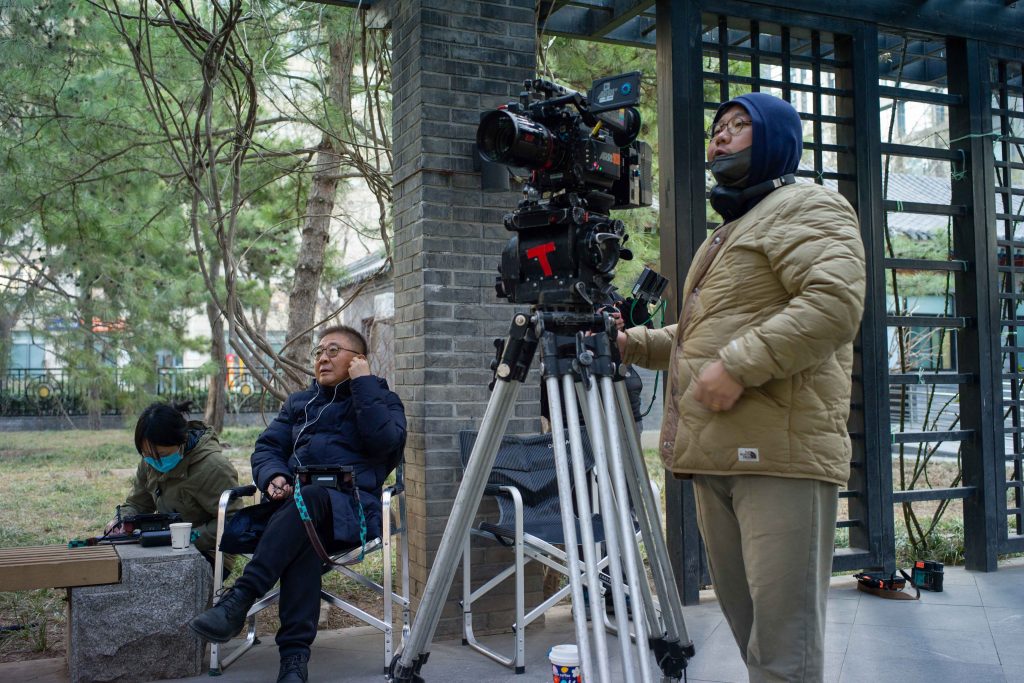
I like to use my phone to take some photos at the shooting location and create a couple of simple colour palettes, and check to see if they capture the mood the director is going for. I rarely look for inspiration or references because your scenes, characters, and styling won’t come from there. Most likely, we would already have an idea about the general tone we were after even during location scouting, and we would try to capture and convey that feeling with every shot during the actual filming. In this way, a film’s overall visual style is gradually established.
The Shadowless Tower tells a story that takes place in Beijing – a sizable city, but not as modernised as Shanghai or Shenzhen. Rather, it has a rich cultural heritage and humanistic vibes. There is a mix of modern buildings and traditional architecture like white pagoda temples and hutongs, giving the city its unique flavour. The choice of filming locations is crucial – it can even affect the mood of the film unless you try to downplay or avoid it. When we were filming Back to the Wharf in Quanzhou and Shishi, we found the regional traits to be too pronounced, so we deliberately de-emphasised the distinctively Quanzhou elements, opting instead for a more generic southern coastal city atmosphere.
Shooting locations and the script itself already set the style of the film – it doesn’t need to be crafted. The realism of this film also removes the need to over-polish the style. What’s more important is that we can reflect the characteristics of the times and capture the unique flavour of a place. Since our scenes are mostly shot around the tower, I particularly wanted to create a sense of a stroll, a feeling that aligns with the many travelling scenes in the movie, like slow walks or bicycle rides. We finished filming in just around 20 days and made good use of that time.
How did you determine the shooting method for The Shadowless Tower?
Director Lu Zhang is a master at transforming emotion and rhythm through character work. I also quite like this rhythm produced through on- and off-screen adjustments. He has good control over the timing of each shot and performance, like how long a person can be inside the frame and how long before the scene ends, among other things. As such, the film already felt very moving even as it was being filmed, and we knew what to expect from it as soon as we finished filming.
We did not have a specific lighting design, we just did what felt right. As always, we made every effort to avoid interfering with the actors’ performance with lighting equipment. Lighting issues are rare when shooting urban life films since you can just utilise real light sources, perhaps just modifying their strength from time to time. There’s no need for complex lighting planning. The most frequent issue we encountered was trying to film Ping’an Street without capturing the deliverymen passing by. Even though we mostly shot late in the night, there were still many deliverymen working in the vicinity.
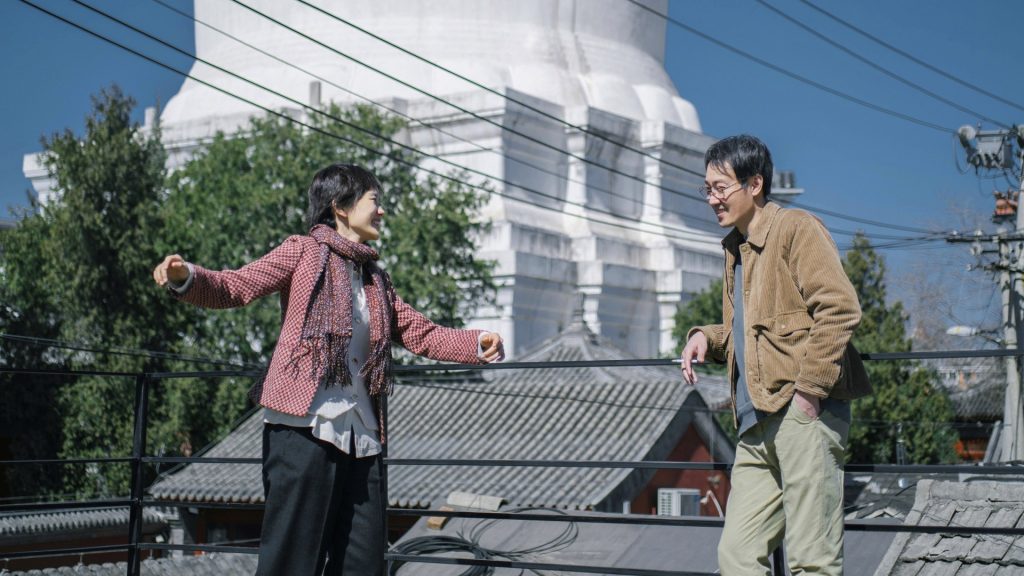
Perhaps because of the pandemic, the minimal setup at the site reminded me of shooting for a student project. There were so many possibilities. We were filming in a 10sqm house in a small residential neighbourhood. After receiving complaints, we evacuated everyone from the site, leaving only a remote-controlled slider and camera in the room as well as me, the director, two leading actors Tian Zhuangzhuang and Xin Bai Qing, the sound technician and the focus puller. We finished shooting all the scenes with just the six of us in the room.
Although a movie is considered a large-scale industrial product, some movies and projects indeed do not need so many people onsite. This helped us work more efficiently as we all knew our roles.
What were the factors you considered when choosing your shooting equipment?
I am not particularly knowledgeable about equipment, I can only see the differences in outcome. I am also not keen on analyzing data. I just gauge by the feeling of the shot and if I like the effect, that’s what would attract me to a piece of equipment.
One of the principles I follow when choosing lenses and cameras is newness, meaning how well they are maintained. Since the advent of mobile phones as a medium, the videos and visual elements around the life that everyone sees are sharper and crisper, unlike the rough images we saw when we were younger or as 70s kids saw when they were young. The changes and improvements in viewing conditions and the environment have affected our current concept of images.
I prefer to shoot at the moment or use a particular moment in a story to determine what to do. Like Japanese director Jun Ichikawa, who found similarities between youth and the fragile, fragmented nature of DV and text messages. That inspired him to choose the medium and expression for his films. When we first started shooting The Crossing, we didn’t have a lot of investment, so we just shot with our mobile phones. You can certainly shoot a movie with a phone. I think what’s exciting about the changes of the times is the lower threshold, but the bigger world beyond that threshold. You have multiple ways at your disposal to tell your story and create your world.
I don’t think it’s possible to describe a film with “traditional”, “classical” or terms that carry conceptual boundaries. I recently watched a South Korean action film that looked like it was shot with a GoPro. I believe that as long as your story and characters have distinct traits, and you can bring your imagination to life through your story, you’ll have a movie. It does not matter whether you use the latest digital cameras or old-fashioned film.
I think one should make films that closely reflect the images that people usually see, like the videos and photos you take of your family on your phone. These have no effects like scratches, rough edges or glare, and I would not purposely create those gimmicks or rough textures. As long as the equipment is well-maintained and has features that convince me it’s a better choice, I will use it.
What were your reasons for choosing the Angénieux Optimo Prime series to shoot The Shadowless Tower?
The characteristics of a lens, or the differences between lenses, are hard to discern in isolation. You have to compare them side by side.
I once shot a commercial on film and at the time I thought different lenses wouldn’t make much of a difference. We shot indoors with an MP lens and then outdoors with a UP lens. Since the MP lens was expensive to rent, we figured daylight exteriors wouldn’t require it. But when we edited the footage, we found a stark contrast in the look and feel between the interior and exterior shots, even though the lenses were from the same brand.
What stood out about the Angénieux Optimo Prime series, to me, are the red hue and the lightness of the lenses, which I found quite unique. Some scenes in The Shadowless Tower were shot with Angénieux Optimo Prime because of the faint red cast of the images. The red cast is visible even in cool-toned environments, which suited The Shadowless Tower very well.
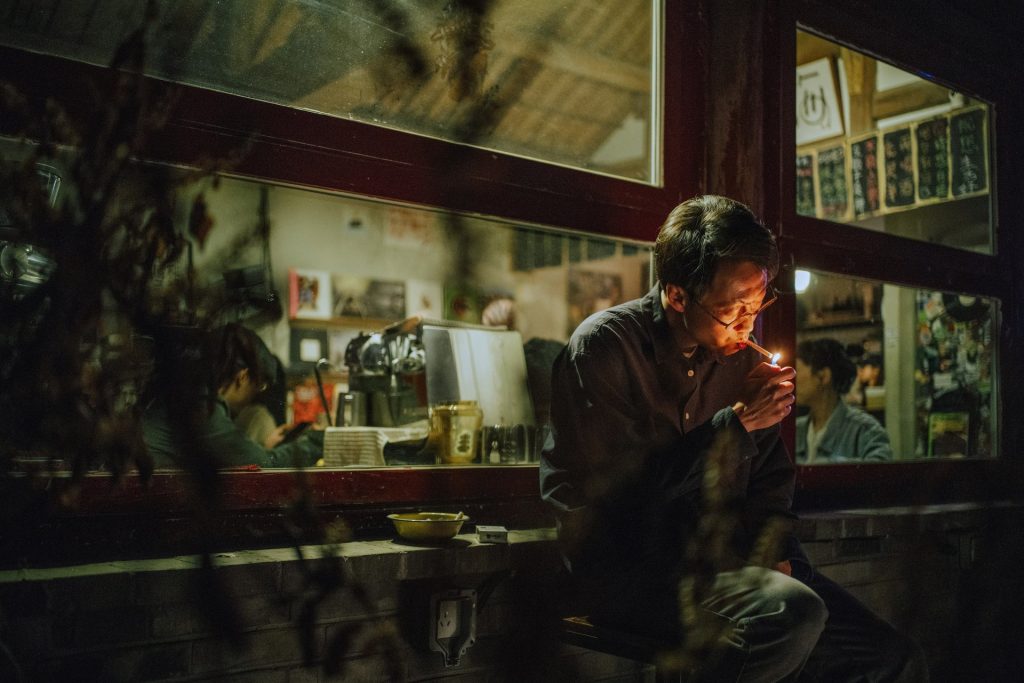
In the days I shot with film cameras, I found that different types of film made a significant impact. Kodak was distinctly Kodak, Fuji was distinctly Fuji. Angénieux Optimo Prime is most reminiscent of the AGFA style, with a slightly pinkish, reddish tone. Interestingly, AGFA film packaging also had warm elements. I like the texture that Optimo Prime produces, as it gives the film a dominant hue.
